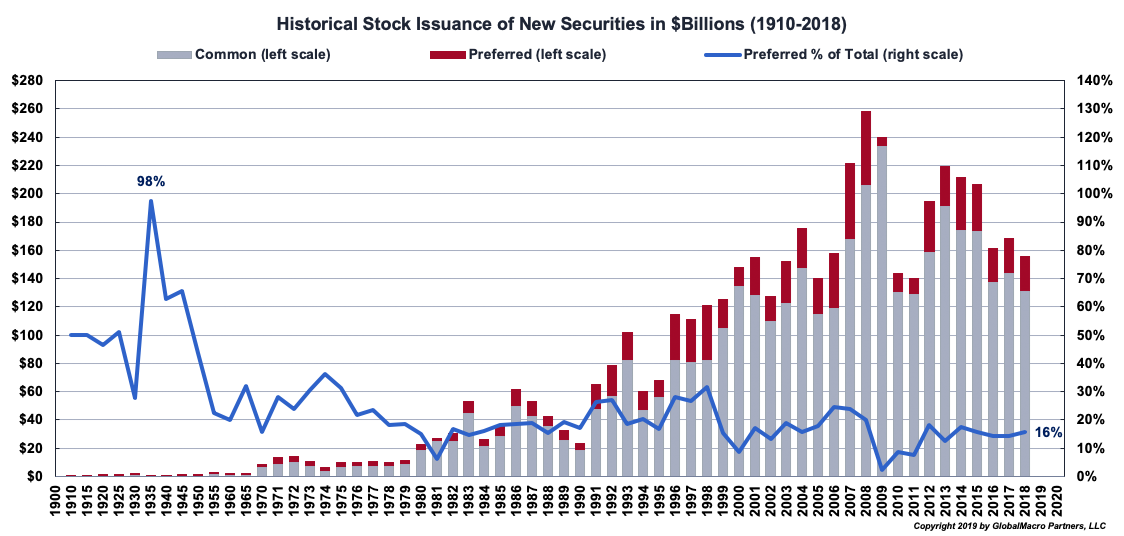Take a Ride on the B&O Railroad
Destra Capital
June 18, 2019To understand the potential attractiveness of preferreds, we are going to “take a ride on the B&O Railroad”. Looking back at history may help us gain an understanding of why preferred stocks have been used for nearly two centuries by the wealthy and institutions alike as an attractive alternative and compliment to stocks and bonds, within a well-diversified portfolio.
Growth = Need for Capital
Our history review begins in 1800. Back at the turn of the 19th century; (1800's), the United States markets were primarily a collection of privately-owned small businesses. At the time, big business didn’t exist, and the stock market was comprised of mostly regionally based banks like Bank of North America, New Haven Bank, and Bank of Rhode Island. Very few, if any, traditional companies had floated shares yet.
By 1835 though things started to change. The industrial age was in full swing, and other sectors such as industrials and railroads were growing fast and needed capital to expand. By 1900, modern day sectors began to form forming and mature into the market we recognize today in 2019.

The Origin of Preferred Stocks
By the early 1830’s, America’s railroad companies were in a footrace to expand their rail lines across the US and this required huge amounts of capital. Due to delays and cost overruns, the main creditors (state & local governments) were unwilling to extend more credit, and common stock (local) investors weren’t interested in buying more common stock until profits were realized.
As a result, railroad track completion was at risk because they needed more capital. In 1836, the State of Maryland developed an innovative “hybrid” solution to fund their local railroads and canal companies by creating the first preferred stock issues in US history*. B&O Railroad was one of those companies, and one of the first to issue preferred stock in 1836. These early preferred stock issues led to the robust growth of the preferred stock market in America.
*Maryland Law 1835, chapter 395 authorized the investment in newly issued preferred stock of the following companies: Baltimore and Ohio Railroad Co., Chesapeake and Ohio Canal Co., Eastern Shore Railroad Co., Maryland Canal Co., Annapolis and Potomac Canal Co.
Growth of the Preferred Market
The chart below (from 1836 through the first half of the 1900’s) shows that preferred stock dominated stock issuance in the 19th and early 20th centuries.

By 1936, 98% of all stock issued that year was preferred stock. While that was an extreme following the market crash in 1929, preferreds have continued to be issued principally because of factors like these:
- Preferreds are a hybrid security
- Offers historically high yields
- Attractive valuations
- Tax advantages
- Historically low correlation to other asset classes
Look for more over the coming weeks, we will continue to highlight the popularity of preferreds. We hope you have enjoyed this ride on the B&O Railroad, and check back for more information on preferreds to come.
